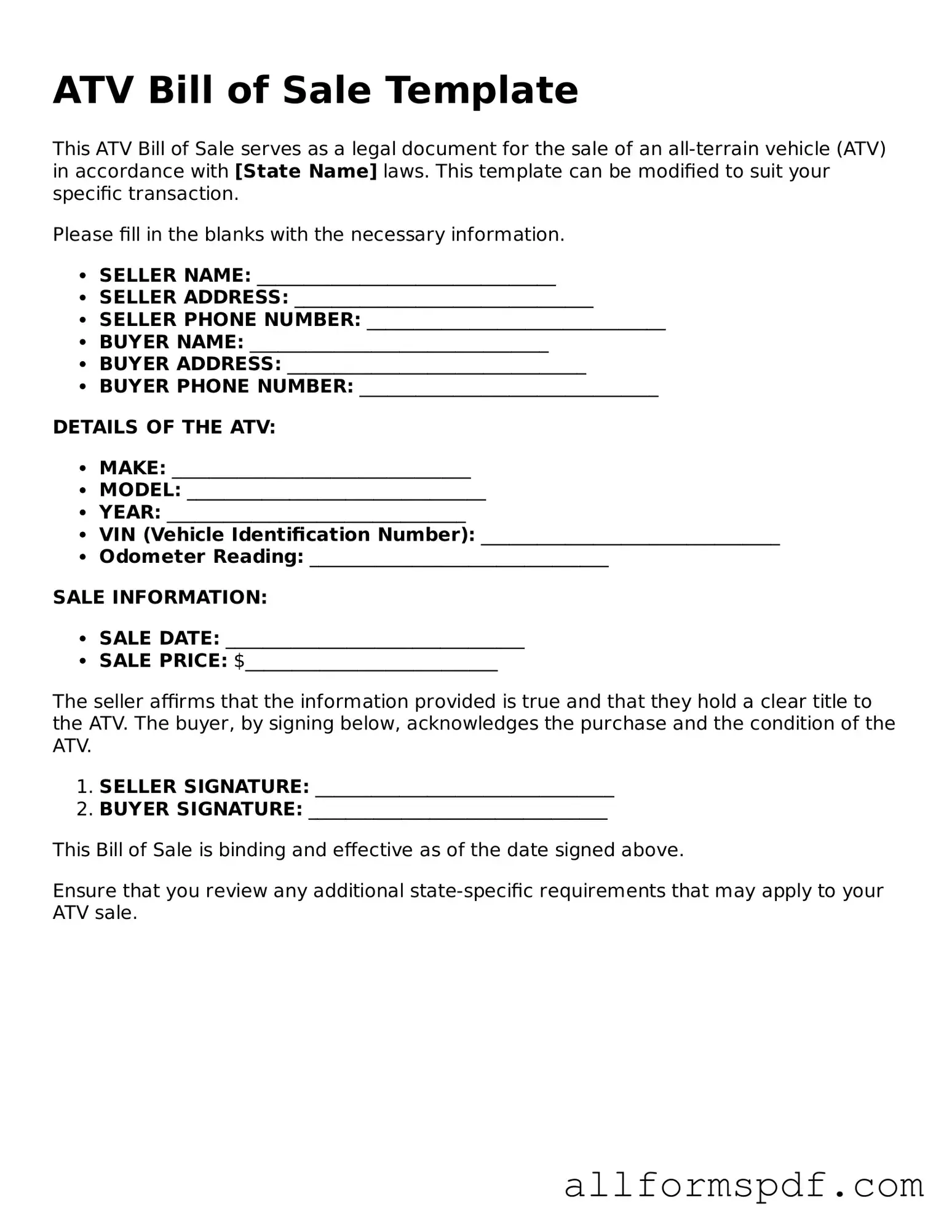When completing the ATV Bill of Sale form, individuals often overlook critical details that can lead to complications. One common mistake is failing to provide accurate vehicle identification information. The ATV's Vehicle Identification Number (VIN) must be correct, as it uniquely identifies the vehicle. Errors in this number can cause issues with registration or ownership disputes in the future.
Another frequent error is neglecting to include the purchase price. This information is essential for both the buyer and seller, as it establishes the value of the transaction. Without this detail, tax authorities may have difficulty assessing the appropriate taxes owed on the sale.
People sometimes forget to sign the document. Both the seller and the buyer must sign the Bill of Sale for it to be legally binding. A missing signature can render the document invalid, leading to potential disputes over ownership or the terms of the sale.
Additionally, individuals may not include the date of the sale. This date is important for record-keeping and can affect the timing of tax obligations. A missing date can create confusion regarding when the transaction occurred.
Another mistake involves not providing complete contact information for both parties. Including full names, addresses, and phone numbers helps ensure that both the buyer and seller can be reached if any issues arise after the sale. Omitting this information can complicate communication in the future.
Some individuals may also fail to indicate whether the ATV is sold "as is." This statement clarifies the condition of the vehicle and limits liability for the seller regarding future repairs or issues. Without this clear designation, misunderstandings may occur regarding warranties or guarantees.
Finally, neglecting to keep a copy of the signed Bill of Sale is a significant oversight. Both parties should retain a copy for their records. This document serves as proof of the transaction and can be vital if disputes arise later on.
